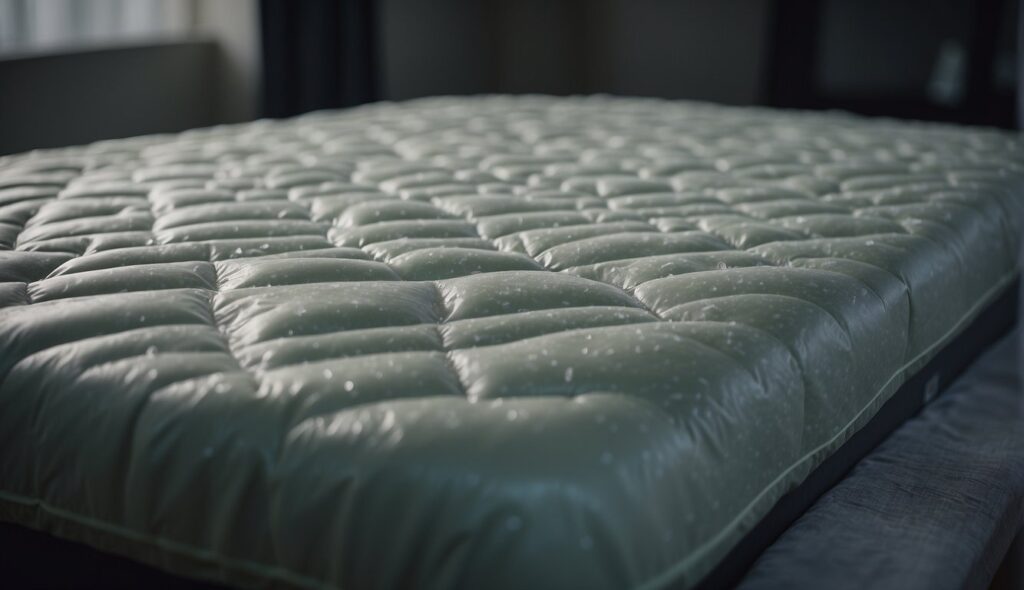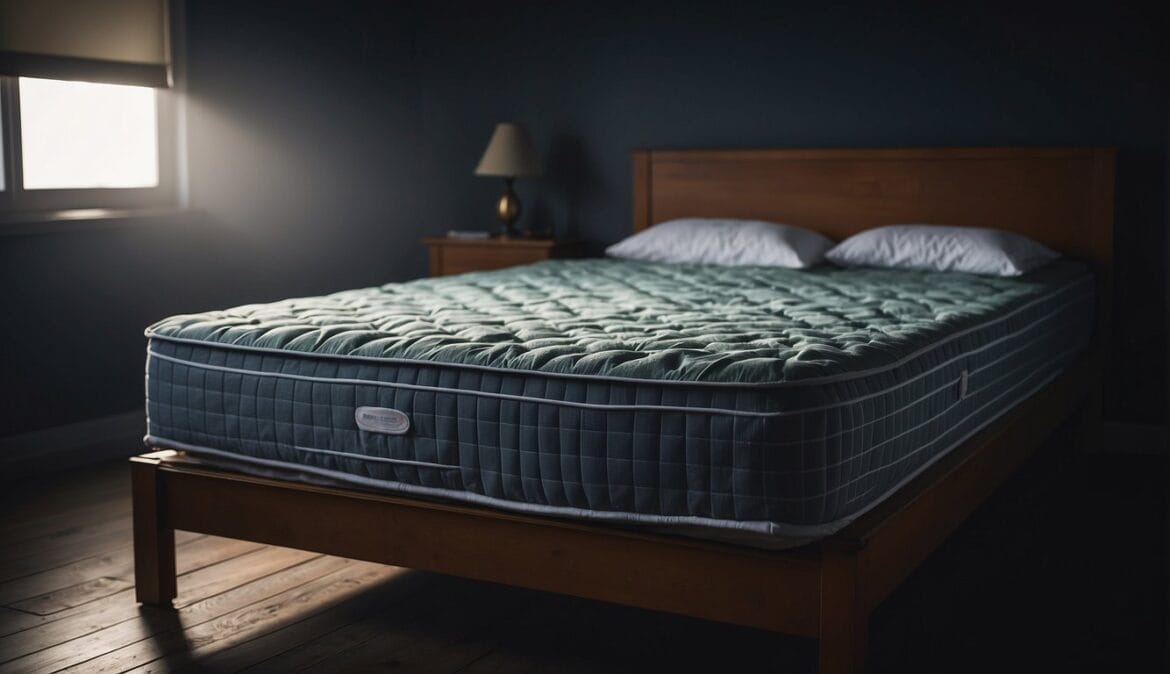Discovering mold on your mattress is unsettling. You’ll wonder if trashing it is your only option. And that depends on how bad the mold growth is. If a mattress has become completely soaked with water, mold will grow in the depths of the mattresses’ fibers and, yes, it will be best to throw it away.
But if a mattress has only suffered a small spill, it can usually be safely cleaned up: Just focus on drying it as much as possible, and as quickly as possible.
Water stains, which look a bit like coffee or yellow discoloration, are a sign of past wetness and possible mold growth.
However, throwing your mattress away isn’t always necessary. There are steps you can take to remove mold and salvage your mattress, as long as the infestation isn’t too severe.
“Mattresses should be elevated OFF of the floor, whether the floor is wood, tile, vinyl, or carpet. That air flow underneath and all around the mattress is incredibly important to mold prevention. Children’s mattresses should have a waterproof covering to prevent leaks and spills from saturating the mattress.”
Brandon Faust, Founder, Mold Solutions, author of Mold-Free Living.

Preventing mold in your mattress is also key to ensuring the longevity and hygiene of your sleeping environment. Mold thrives in damp, poorly ventilated areas, so maintaining a dry and well-aerated space is crucial. Strategies such as using a dehumidifier, ensuring good air circulation, and adopting protective measures can significantly mitigate the risk of mold taking hold in your mattress.
Understanding how to spot and deal with mattress mold quickly can save you both time and money, while also preserving your health. With the right approach and regular maintenance, you can prevent mold growth and extend the life of your mattress without immediate disposal.
“Mattresses that get wet from flooding and storm damage usually do have to be thrown away and replaced, since the water is so deeply settled it will cause mold growth internally, which can lead to a host of breathing and other problems, like restless sleep, coughing, eye infections, and more. Children specifically should never, ever sleep on a moldy, wet, or damp mattress. Nor should the elderly, pregnant women, or persons with weakened immune systems.“
Brandon Faust, Founder, Mold Solutions.
Understanding Mattress Mold

Mold on your mattress can result from various factors and may pose health risks if not addressed properly. The following information provides specific details concerning the causes and health implications of mattress mold.
Causes of Mattress Mold
- Moisture and Humidity: Mold thrives in moist environments. If your mattress is exposed to high humidity levels or is situated in a damp area, it becomes susceptible to mold growth.
- Lack of Ventilation: Mattresses need proper airflow to remain dry. Without adequate ventilation, especially in tightly enclosed spaces, the risk of mold developing increases. Placing a mattress directly on the floor of an apartment and with no vented support beneath it is a sure way to get a moldy mattress.
Health Risks Associated with Moldy Mattresses
- Respiratory Issues: Exposure to mold can lead to symptoms such as a stuffy nose, wheezing, or itchy eyes and skin. Those with existing respiratory conditions may experience worsening symptoms.
- Allergic Reactions: For individuals sensitive to mold, exposure to moldy mattresses can trigger allergic reactions, potentially requiring medical attention.
Prevention and Maintenance

To safeguard your mattress against mold, you must consider the materials it is made of, the environment in which it’s placed, and the maintenance strategies you employ. These factors are integral to the longevity and hygiene of your mattress.
Choosing the Right Mattress
When selecting a mattress, opt for materials that are less susceptible to mold growth. Mattresses with synthetic latex or those advertised as hypoallergenic are designed to resist mold and mildew. It’s also best to choose a mattress with a removable, machine-washable cover for easier cleaning.
Environmental Control
Controlling the environment in your bedroom is crucial for mold prevention. Ensure your room is well-ventilated and maintain humidity levels below 50% with the use of dehumidifiers or air conditioners. Pay attention to consistent airflow, as well, by positioning your bed away from walls and opening windows when possible.
Proper Cleaning Techniques
Regular cleaning can significantly minimize the risk of mold developing on your mattress. Here’s a brief rundown:
- Weekly
- Vacuum the mattress to eliminate dust and spores.
- Monthly
- Inspect for any signs of dampness or mold.
- Bi-Annually
- Air out your mattress in sunlight.
- Spills
- Address any spills immediately by blotting the area and using fans to speed up the drying process.
To further support your maintenance efforts, consider using a hypoallergenic mattress protector and wash your bedding regularly in hot water. If mold is detected, specialized cleaning solutions can be used; however, severe cases may require professional remediation.







